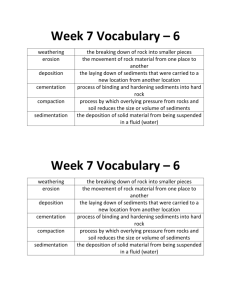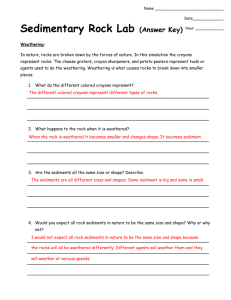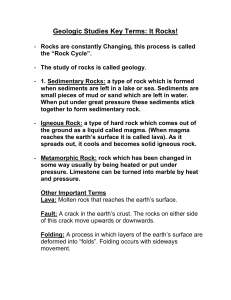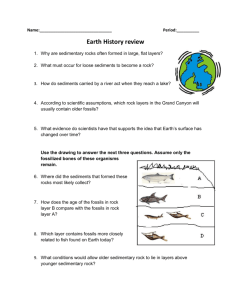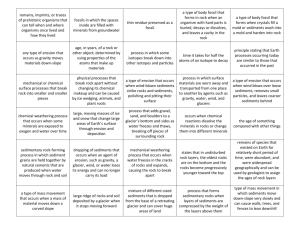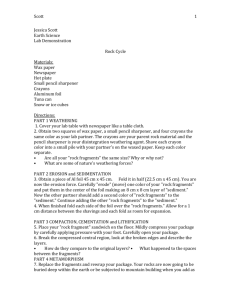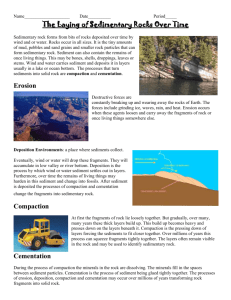Sedimentary Rock Crayon Lab
advertisement
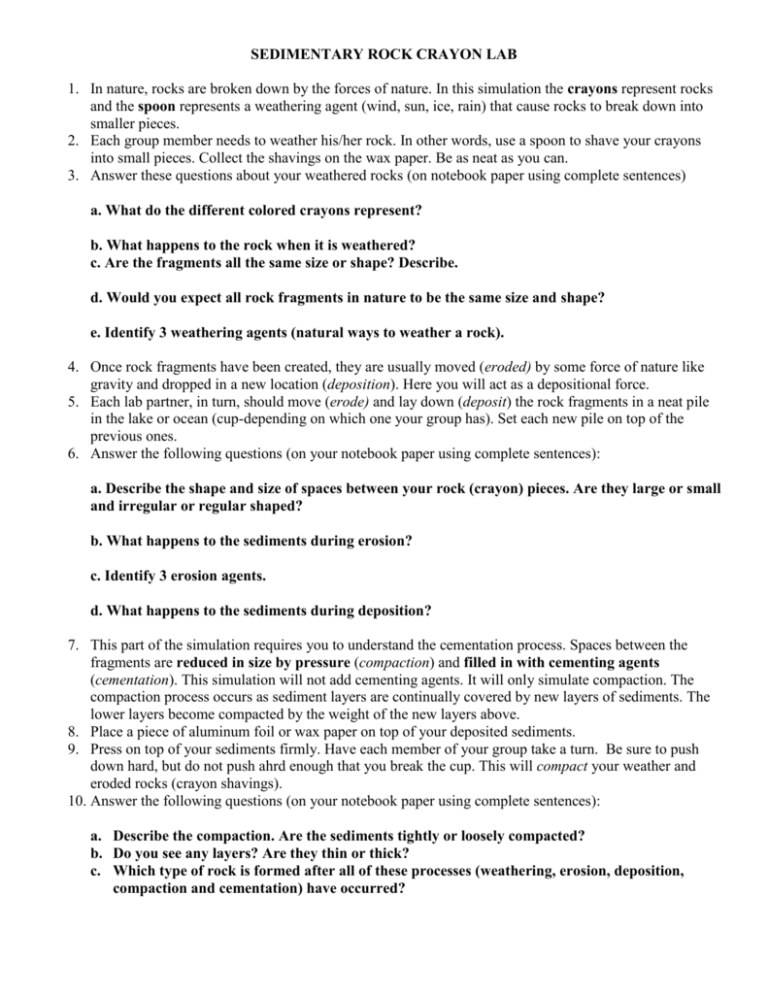
SEDIMENTARY ROCK CRAYON LAB 1. In nature, rocks are broken down by the forces of nature. In this simulation the crayons represent rocks and the spoon represents a weathering agent (wind, sun, ice, rain) that cause rocks to break down into smaller pieces. 2. Each group member needs to weather his/her rock. In other words, use a spoon to shave your crayons into small pieces. Collect the shavings on the wax paper. Be as neat as you can. 3. Answer these questions about your weathered rocks (on notebook paper using complete sentences) a. What do the different colored crayons represent? b. What happens to the rock when it is weathered? c. Are the fragments all the same size or shape? Describe. d. Would you expect all rock fragments in nature to be the same size and shape? e. Identify 3 weathering agents (natural ways to weather a rock). 4. Once rock fragments have been created, they are usually moved (eroded) by some force of nature like gravity and dropped in a new location (deposition). Here you will act as a depositional force. 5. Each lab partner, in turn, should move (erode) and lay down (deposit) the rock fragments in a neat pile in the lake or ocean (cup-depending on which one your group has). Set each new pile on top of the previous ones. 6. Answer the following questions (on your notebook paper using complete sentences): a. Describe the shape and size of spaces between your rock (crayon) pieces. Are they large or small and irregular or regular shaped? b. What happens to the sediments during erosion? c. Identify 3 erosion agents. d. What happens to the sediments during deposition? 7. This part of the simulation requires you to understand the cementation process. Spaces between the fragments are reduced in size by pressure (compaction) and filled in with cementing agents (cementation). This simulation will not add cementing agents. It will only simulate compaction. The compaction process occurs as sediment layers are continually covered by new layers of sediments. The lower layers become compacted by the weight of the new layers above. 8. Place a piece of aluminum foil or wax paper on top of your deposited sediments. 9. Press on top of your sediments firmly. Have each member of your group take a turn. Be sure to push down hard, but do not push ahrd enough that you break the cup. This will compact your weather and eroded rocks (crayon shavings). 10. Answer the following questions (on your notebook paper using complete sentences): a. Describe the compaction. Are the sediments tightly or loosely compacted? b. Do you see any layers? Are they thin or thick? c. Which type of rock is formed after all of these processes (weathering, erosion, deposition, compaction and cementation) have occurred?

